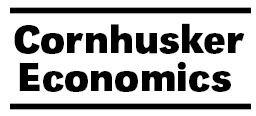Agricultural Economics, Department of

Cornhusker Economics
Date of this Version
7-14-2021
Document Type
Newsletter Issue
Abstract
In designing conservation policies both ecologists and economists have argued that greater spatial coordination of producer land use adoption can improve environmental outcomes for a range of important environmental targets such as wetlands restoration, nutrient pollution reduction,and species conservation. Economists have suggested two types of incentive policies for achieving such spatial coordination: the Agglomeration Bonus (AB) (Parkhurst and Shogren, 2007) and spatially-connected auctions (Banerjee et al., 2015). However, a majority of the analyses to date have focused on incentives aimed at individual land manager participation in such schemes (e.g., Fooks et al., 2016). In contrast, a number of countries such as the UK and the Netherlands have recently introduced policies that encourage joint participation by groups of producers. Thus, in this research, we study whether joint participation can in fact lead to improved environmental and economic outcomes in conservation policies.


Comments
Copyright 2021 University of Nebraska.